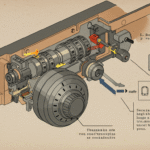Imagine, if you will, a man perched on top of an elephant.
The man is holding reins, steering the elephant down a road, and it seems, at first, that the man is in control. But the elephant is a large animal, three tons to be exact, and if it decides to disagree with the man’s directions… well I’m sure you can guess who wins.
The rider thinks he has the power, but in reality he is no match for the will of the elephant.
I first learned about the elephant and the rider as a metaphor for the human brain and how we make decisions from Chip and Dan Heath in their book Switch: How to Change When Change is Hard. Here’s the gist of it:
- Rider: the conscious, rational, thinking brain; the part that wants to work out, eat well, go to bed early, meditate and drink more water
- Elephant: the automatic, instant gratification driven and emotional part of our brain; the part that wants to sit on the couch and watch tv, skip the workouts, eat ice cream and drink soda
This past week, every time I hopped on the treadmill I felt like the rider sitting on top of the elephant, wrestling with the reins and willing it to stay on the path with all of my might. Even though I’d made the path as easy and smooth as possible (by planning workouts, not controlling my diet, preparing gym clothes etc.) the ride was a struggle. I thought of nothing but quitting, and I was mentally exhausted by the time I was done.
I couldn’t say no to pizza or ice cream. I wasted time on Facebook and Youtube and clicking through on stupid headlines. I was cranky and impatient.
The elephant was doing it’s thing, and I was powerless to stop it.
THE WILLPOWER METER
Change is hard because our self control wears us out. When you have nothing left in the tank, it’s that much more difficult to keep chasing the new behavior.
The good news is, the struggle is temporary.
Where the first week of this challenge depleted my willpower supply, week two has been significantly easier. The daily workouts have become less painful, and I’m not as mentally drained.
I still have a ways to go before the exercise habit solidifies (and subsequently becomes a keystone habit). In the mean time, I’ll keep lacing up, enjoying my small wins… and figuring out why I can hold a plank for two minutes without breaking a sweat, but can’t for the life of me run for two minutes (at a very slow 9 minute/mile pace) without huffing and puffing!
Week 2 stats:
- Mile run: 9m 25 seconds (25 seconds improvement)
- Forearm plank: 3 minutes (1m 34 second improvement)











